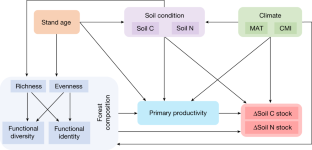2023-04-27 米国国立再生可能エネルギー研究所(NREL)
同研究は、予測支援予測制御(FAPC)アルゴリズムを使用することで、電気自動車の充電ステーションや建物のHVACシステムなどの装置間で調整を行い、発電量と需要のバランスを取ることで、短時間の蓄積装置の必要性を減らすことができることを示唆している。
<関連情報>
- https://www.nrel.gov/news/program/2023/nrel-researchers-reveal-concept-to-curb-need-for-battery-storage.html
- https://www.sciencedirect.com/science/article/pii/S2666792423000100
- https://www.sciencedirect.com/science/article/pii/S0306261922002070
需要の移り変わり: 再生可能エネルギー発電の追従による必要な蓄電容量の削減 Shifting demand: Reduction in necessary storage capacity through tracking of renewable energy generation
Dylan Wald, Kathryn Johnson, Jennifer King, Joshua Comden, Christopher J. Bay, Rohit Chintala, Sanjana Vijayshankar, Deepthi Vaidhynathan
Advances in Applied Energy Available online: 22 March 2023
DOI:https://doi.org/10.1016/j.adapen.2023.100131

Highlights
•Introducing a novel forecast-aided predictive control (FAPC) algorithm.
•Combining forecasts with EV charging control for enhanced performance.
•Demonstrating how different systems can coordinate to track renewable energy generation.
•Evaluating the robustness of FAPC to differing weather conditions and forecasts.
•Quantifying the tracking performance through differential sizing needs of battery storage.
Abstract
Renewable energy (RE) generation systems are rapidly being deployed on the grid. In parallel, electrified devices are quickly being added to the grid, introducing additional electric loads and increased load flexibility. While increased deployment of RE generation contributes to decarbonization of the grid, it is inherently variable and unpredictable, introducing uncertainty and potential instability in the grid. One way to mitigate this problem is to deploy utility-scale storage. However, in many cases the deployment of utility-scale battery storage systems remain unfeasible due to their cost. Instead, utilizing the increased amounts of data and flexibility from electrified devices on the grid, advanced control can be applied to shift the demand to match RE generation, significantly reducing the capacity of required utility-scale battery storage. This work introduces the novel forecast-aided predictive control (FAPC) algorithm to optimize this load shifting in the presence of forecasts. Extending upon an existing coordinated control framework, the FAPC algorithm introduces a new electric vehicle charging control algorithm that has the capability to incorporate forecasted information in its control loop. This enables FAPC to better track a realistic RE generation signal in a fully correlated simulation environment. Results show that FAPC effectively shifts demand to track a RE generation signal under different weather and operating conditions. It is found that FAPC significantly reduces the required capacity of the battery storage system compared to a baseline control case.
分散型コントローラーの統合: 充電ステーションと建物の連携による電力参照トラッキング Integration of distributed controllers: Power reference tracking through charging station and building coordination
Dylan Wald, Jennifer King, Christopher J. Bay, Rohit Chintala, Kathryn Johnson
Applied Energy Available online: 14 March 2022
DOI:https://doi.org/10.1016/j.apenergy.2022.118753

Highlights
•Devices with different optimization algorithms and different objectives can cooperatively communicate.
•Electric vehicles and buildings can work together to provide ancillary services to the grid.
•A new method allows consensus between two subsystems through iterative communication.
•Multiple subsystems collectively track a reference signal while individually satisfying objectives.
Abstract
An influx of controllable devices and sensor information can provide both barriers and opportunities for an improved electric grid. When operating by themselves, it has been shown that these devices can provide individual benefits, maintaining some level of convenience, grid stability, and quality of life. However, a clean and sustainable energy future requires the coordinated control of these edge devices on a large scale with state-of-the art control and optimization theory innovation integrated with abundant sensor information. In this work, we take a step toward this vision by proposing a method to explore whether two different types of devices can coordinate to reach consensus on a global objective while continuing to provide their individual benefits. Due to their high impact on the grid and quality of life, this proof-of-concept work focuses on the optimal control of buildings and electric vehicle charging. It is shown that the novel algorithm, termed Network Lasso – Alternating Direction Method of Multipliers – Limited Communication Distributed Model Predictive Control (NALD), successfully achieves the global objective by tracking a power reference from the grid. Simultaneously, the peak electric vehicle charging load is minimized while fully charging each electric vehicle and the internal building temperature is regulated within specified temperature bounds. Results indicate that this can be achieved in the selected example consisting of three charging stations and one large office building.



